
Fleischer Studios was an American animation studio founded in 1929 by brothers Max and Dave Fleischer, who ran the pioneering company from its inception until its acquisition by Paramount Pictures, the parent company and the distributor of its films. In its prime, Fleischer Studios was a premier producer of animated cartoons for theaters, with Walt Disney Productions being its chief competitor in the 1930s.
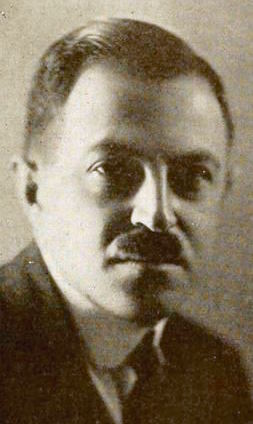
Max Fleischer was a Polish-American animator and studio owner. Born in Kraków, Poland, Fleischer immigrated to the United States where he became a pioneer in the development of the animated cartoon and served as the head of Fleischer Studios, which he co-founded with his younger brother Dave. He brought such comic characters as Koko the Clown, Betty Boop, Popeye, and Superman to the movie screen, and was responsible for several technological innovations, including the rotoscope, the "follow the bouncing ball" technique pioneered in the Ko-Ko Song Car-Tunes films, and the "stereoptical process". Film director Richard Fleischer was his son.
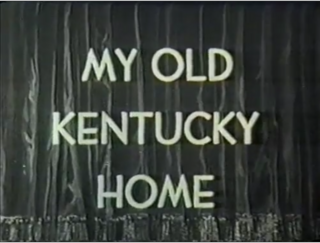
My Old Kentucky Home is a short animation film originally released in June 1926, by Max and Dave Fleischer of Fleischer Studios as one of the Song Car-Tunes series. The series, between May 1924 and September 1926, eventually totaled 36 films, of which 19 were made with sound. This cartoon features the original lyrics of "My Old Kentucky Home" (1853) by Stephen Foster, and was recorded in the Lee de Forest Phonofilm sound-on-film system.
Chinatown is a common name for an urban enclave with large numbers of Chinese people and/or businesses within a non-Chinese society.

"In My Merry Oldsmobile" is a popular song from 1905, with music by Gus Edwards and lyrics by Vincent P. Bryan.

"(You're the Flower of My Heart,) Sweet Adeline" is a ballad best known as a barbershop standard. It was first published in 1903, with lyrics by Richard Husch Gerard to music by Harry Armstrong, from a tune he had written in 1896 at the age of 18. According to a 1928 newspaper story, the lyrics were inspired "by a girl who worked at the music counter of a New York department store." After failing to find a publisher with the initial title, "You're the Flower of My Heart, Sweet Rosalie", according to a story the two decided a new title was in order and were inspired by a poster advertising the farewell tour of opera singer Adelina Patti. It did not become a hit until it was performed in 1904 by the group The Haydn Quartet. The Haydn Quartet's version was #1 for 10 weeks in 1904, and the Peerless Quartet also hit #1 with their version in 1904, for three weeks, according to Joel Whitburn's Pop Memories.

"Scrub Me Mama with a Boogie Beat" is a 1940 hit boogie-woogie popular song written by Don Raye. A bawdy, jazzy tune, the song describes a laundry woman from Harlem, New York whose technique is so unusual that people come from all around just to watch her scrub. The Andrews Sisters and Will Bradley & His Orchestra recorded the most successful pop versions of the song, but it is today best recognized as the centerpiece of an eponymous and controversial Walter Lantz Studio cartoon from 1941, distributed by Universal Pictures.
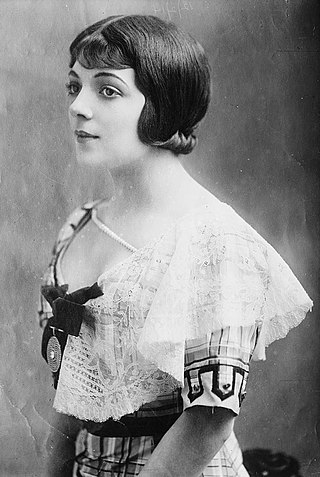
Irène Bordoni was a Franco-American actress and singer.
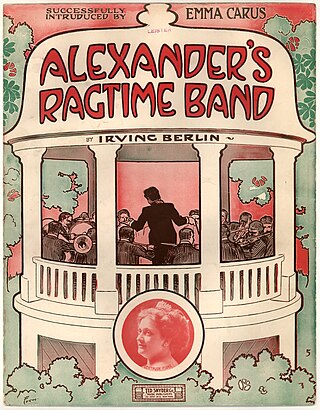
Screen Songs are a series of animated cartoons produced at the Fleischer Studios and distributed by Paramount Pictures between 1929 and 1938. Paramount brought back the sing-along cartoons in 1945, now in color, and released them regularly through 1951. Two of Paramount's one-shot cartoons quietly revived the format later: Candy Cabaret (1954) and Hobo's Holiday (1963).
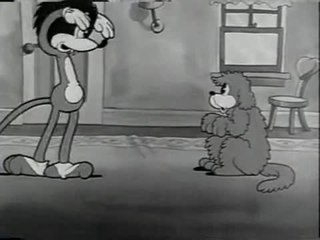
The bouncing ball is a virtual device used in motion picture films and video recordings to visually indicate the rhythm of a song, helping audiences to sing along with live or prerecorded music. As the song's lyrics are displayed on the screen in a lower third of projected or character-generated text, an animated ball bounces across the top of the words, landing on each syllable when it is to be sung.

The Show of Shows is a 1929 American pre-Code musical revue film directed by John G. Adolfi and distributed by Warner Bros. The all-talking Vitaphone production cost almost $800,000 and was shot almost entirely in Technicolor.
Ko-Ko Song Car-Tunes, Song Car-Tunes, or Sound Car-Tunes, is a series of short three-minute animated films produced by Max Fleischer and Dave Fleischer between May 1924 and September 1927, pioneering the use of the "Follow the Bouncing Ball" device used to lead audiences in theater sing-alongs. The Song Car-Tunes also pioneered the application of sound film to animation.
Little Annie Rooney is a short animated film that is part of the Fleischer Studios Screen Songs series. It is based on the popular song Little Annie Rooney and uses it in the soundtrack. The chorus says:

Swing You Sinners! is a 1930 animated cartoon short, produced by Fleischer Studios as part of the Talkartoons series. The cartoon is notable for its surreal, dark and abstract content.
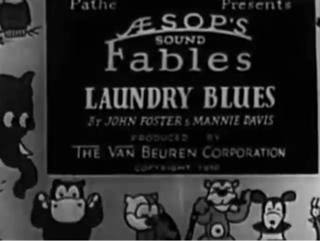
Laundry Blues is a 1930 animated short film produced by The Van Beuren Corporation and released by Pathe. The film, which takes place in a laundromat run by Chinese caricatures, was released on August 17, 1930.
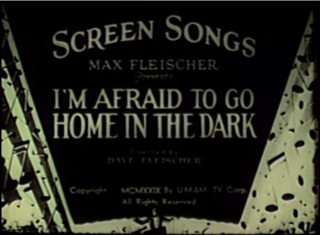
I'm Afraid to Go Home in the Dark is a 1930 animated short film which is presented by Max Fleischer and was directed by Dave Fleischer. The film, which was originally released by the film company Paramount Pictures, features a sing-along version of the song "I'm Afraid to Come Home in the Dark", which was written by Egbert Van Alstyne and Harry Williams and was originally published in 1907.
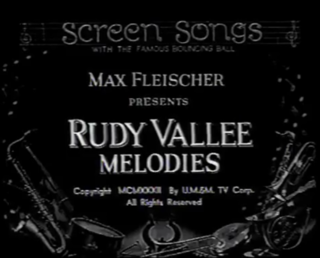
Rudy Vallee Melodies is a 1932 short film which is presented by Max Fleischer and was originally released by Paramount Pictures. The film, which features Betty Boop with a plethora of animals as she throws a house party in her house, stars Rudy Vallee as he sings three separate songs. The film also features sing-along versions to the songs that Vallee sings.
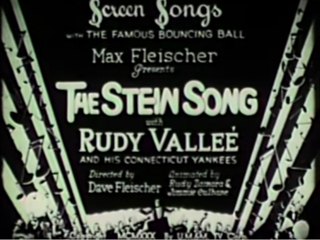
The Stein Song is a 1930 animated short film which is presented by Max Fleischer and was directed by Dave Fleischer. The film, which was animated by Rudy Zamora and Jimmie Culhane, features a sing-along version to "The Stein Song", which was written by Lincoln Colcord and was originally published in 1910. The song is also the school song for the University of Maine.

Kitty from Kansas City is a 1931 animated short film which is presented by Max Fleischer and was originally released by Paramount Pictures. The film, with features Betty Boop as she attempts to comically get to Rudy Valley, features a sing-along of the song "Kitty From Kansas City", a song that Vallee released on vinyl via the Victor record label.

Race Riot is a 1929 animated short film which is presented by Carl Laemmle and was produced by Walter Lantz, who would go on to produce and create the cartoon character Woody Woodpecker with his wife, Gracie Lantz. The film, which both its story and animation was composed by Walter Lantz, 'Bill' Nolan and Tom Palmer, features Oswald the Lucky Rabbit, as he attempts to win a horse race with his horse.


















